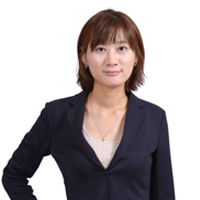Trade experts urge Korean Inc. to diversify markets, products
By Shin Ji-hyePublished : Dec. 2, 2018 - 15:41
South Korean exporters should diversify their markets and products, as uncertainties in world trade due to conflicts between the US and China could continue, and slow growth in emerging nations could weigh down markets, according to trade experts at a seminar in Seoul on Friday.
“A slow growth rate in China and emerging nations, alongside the US, Europe and Japan, could increase the external risks” of the export-led nation that constitutes the world’s fifth-largest export economy, said An Sung-bae, director general of the Korea Institute for International Economic Policy’s international macroeconomics department, during the seminar.
Suggesting that the US growth rate next year would be around 2.3 percent, An said other advanced economies would also experience slowing growth, and predicted that the eurozone economy would grow at 1.8 percent and Japan at 0.8 percent.
China and emerging nations are also expected to have slow growth due to prolonged trade conflicts between the US and China, the possible rise of US interest rates and rising oil prices.
He also forecast next year’s global economic growth rate to be 3.5 percent, lower than 3.7 percent this year.
“A slow growth rate in China and emerging nations, alongside the US, Europe and Japan, could increase the external risks” of the export-led nation that constitutes the world’s fifth-largest export economy, said An Sung-bae, director general of the Korea Institute for International Economic Policy’s international macroeconomics department, during the seminar.
Suggesting that the US growth rate next year would be around 2.3 percent, An said other advanced economies would also experience slowing growth, and predicted that the eurozone economy would grow at 1.8 percent and Japan at 0.8 percent.
China and emerging nations are also expected to have slow growth due to prolonged trade conflicts between the US and China, the possible rise of US interest rates and rising oil prices.
He also forecast next year’s global economic growth rate to be 3.5 percent, lower than 3.7 percent this year.

Je Hyun-jung, a researcher at the Korea International Trade Association, predicted the trade conflict between the US and China would continue, saying, “The US sanctions on China are part of its efforts to contain China’s high-tech industries. China won’t make any concession before it makes the ‘Chinese Dream’ come true,” she said, referring to Chinese leader Xi Jinping’s 2013 slogan aimed at turning the country into a global superpower.
“Korean companies should be prepared for the possible prolonged conflict by reducing its export reliance on the US and China and diversifying their export destinations,” she said.
Currently, China and the US are the nation’s two-largest trade partners, with 24.8 percent of the nation’s total export volume going to China last year and 11.9 percent to the US.
The prolonged trade conflict could cut Korea’s economic growth 0.6 percentage point and cost 150,000 jobs, as proposed changes to China’s currency and taxation policies might harm Korean exporters, according to the Hyundai Research Institute.
Chun Myung-soo, a professor at Vladivostok State University of Economics and Service, said, “The Northern regions -- such as Russia and Commonwealth of Independent States – could be a good alternative to diversifying markets.
He added exporters could center on promising markets including cosmetics, medicines and health care services.
Alongside diversifying export destinations, Korean exporters “should also diversify their export products,” said Moon Byung-ki, a senior researcher at KITA’s Institute for International Trade.
“As the outlook for exports in key industries such as automobiles, steel, smartphones and display is grim next year, new segments, such as consumer goods and parts, should also be pushed (by exporters),” he said.
Chip exports are expected to reach $130 billion next year -- from a record-breaking $100 billion this year -- due to the rising markets of artificial intelligence, the internet of things and self-driving automobiles. However, the growth rate of exports is expected to fall 5 percent from around 30 percent this year due to falling prices of chips, Moon said.
Car exports are also expected to drop 0.3 percent on-year next year, due to falling demand in the global market as well as economic uncertainties in emerging markets due to the possible rise of US interest rates. Display panel exports are also expected to fall 2.2 percent on-year due to the oversupply of liquid-crystal displays in the global market. Exports of digital devices will also face similar challenges due to rising competition with China, according to researcher Moon.
Meanwhile, G-20 member nation leaders gathered in Buenos Aires, Argentina, Saturday. They agreed on a joint declaration that notes divisions over trade but the declaration omitted a reference to the risk of protectionism.
Under the joint statement, the leaders recognized that the multilateral trade system “is currently falling short of its objectives and there is room for improvement,” but did not elaborate on trade conflicts sparked by protectionism.
By Shin Ji-hye (shinjh@heraldcorp.com)


















